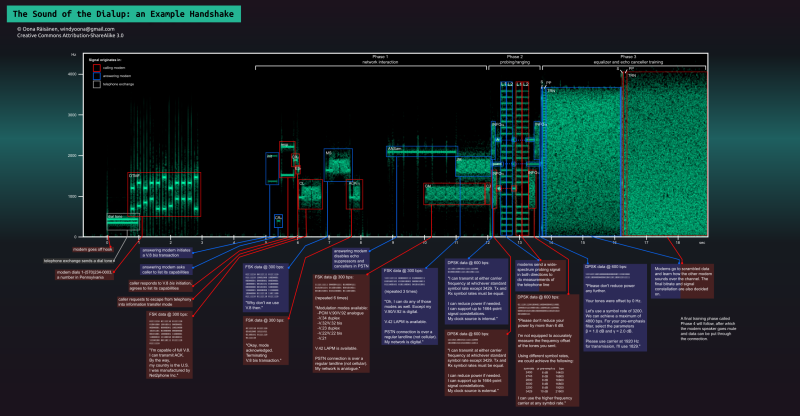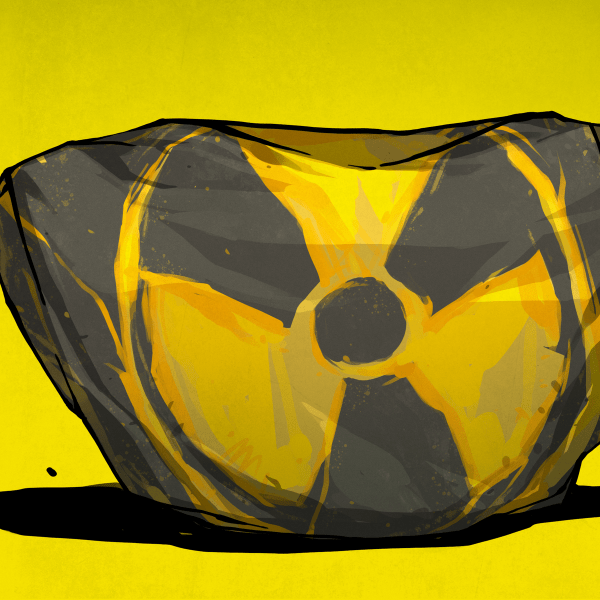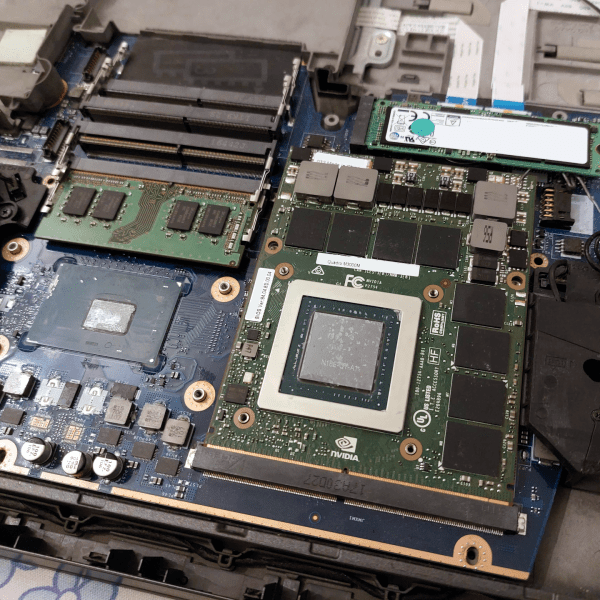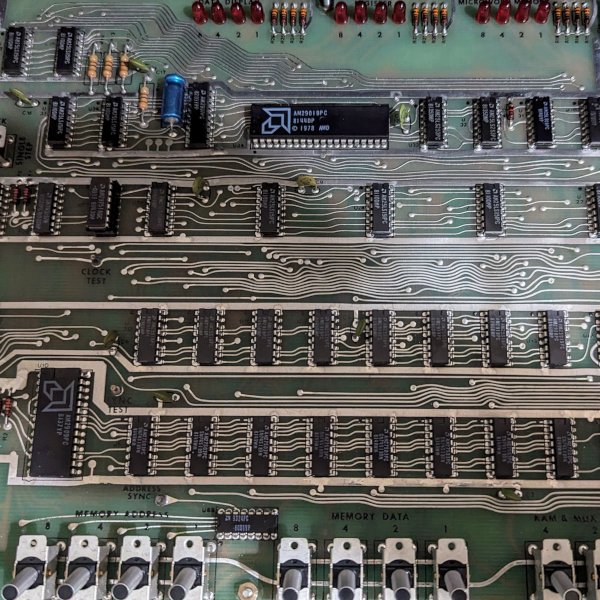If you’re old enough to have used a dial-up modem we’d bet you can do an imitation of the sounds it made while connecting. Those not-so-beautiful sounds heralded the dawning of a technological era. But few actually know what each of those distinct sounds were doing. Now’s your chance to learn. This post explains each step in the dail-up handshake process.
This may be the most useful infographic we’ve ever seen. Normally we just seem them as gimmicks, but [Oona Räisänen] really put together something special with this one. Her blog post includes an audio clip so that you can play back the full handshake sounds. The main box on the graphic shows the audio spectrum from that clip, with an explanation below it. But you’ll also want to read through her full write-up for a more narrative description.
The part we found the most interesting is that these modems needed to disable the echo suppression used by the telephone system in order to operate at full-duplex. Apparently land lines disabled the speaker while you were talking so that you didn’t hear your own voice. This was a problem if the modem was trying to send and receive at the same time.
[via Reddit]

















I wonder if it’s a bad thing that I don’t have to listen to the sound, but actually hear it in my head as I follow along with the picture.
Same here, and I’m 24. I’m on that border between “old enough” and “too young” to remember it. Heard it a couple times as a small (age 4) child, but having grandparents really reinforced it in my later years, haha.
You can still hear similar sounds on 2m and 70cm amateur radio if there’s a packet radio node in your area.
Frequency shift keying mode is used… well, everywhere. Generally if it’s digital it’s FSK at some level.
That’s not even approximately true. The bulk of digital stuff, including the amateur radio data transmissions, is phase shift keyed. Dial-up modems use a combination of phase shift keying and amplitude modulation and haven’t used FSK since 300 baud went out of fashion back in the 1980’s.
Nah, it’s not bad. It just means you’re one of the old ones! It’s a very cool graphic. I am wondering if this means I can play a 2100Hz signal down my phone line to get the exchange to disable the echo cancelling on a voice call?
Simon
I think it has to have periodic phase reversal to work. You might be interested in reading the ITU recommendation for echo cancellation; http://www.itu.int/rec/T-REC-G.168-201202-I/en
Thank you! I’ll have a read.
i saw the image and wondered if anybody else heard the init Resp CD as, da da dat dat, di dat daaaaaaa kschhhhhhhh….
Such a shame. Once what we did needing only our ears, now we do with Wireshark.
+1 to clearly remembering the sound while looking at the diagram. Old enough here to also recall buying my first 300 baud modem.
Great memories, and great article.
Mine was an Omnitec 701B – actually good to 450 baud, according to the manual! It served me well during college, first a Teletype and then a DEC VT05. After that, the sweet tones of 56K were heaven! Kids nowadays with their Internets and cable modems…sheesh!
The stuff that gets burned into your neural pathways…
Still here? I have an Omnitec 701B! Curious how its supposed to work, doesn’t seem to be working for me. (Put receiver on coupler, call a modem, modem tries to handshake, no bueno).
Hmmm…the receiver does need to be a standard Bell System handset from a type 500 or 2500 phone. There’s a light sensor that disables the modem unless it’s blocked by the handset.
Next: make sure your RS232 connector has DTR and CTS asserted low (you can tie them both to DSR).
I don’t think there are any switches other than power to set, but I could be wrong. Make sure the modem you’re calling supports Bell 103 tones (1070/1270 and 2025/2225). The 701B works only with those tones and in Originate mode only (I think…could be wrong on the Originate only). There is, I think, a “carrier detect” (white?) light on the front panel that should come on when it detects the answer tone.
300 BAUD and a telephone bill of a thousand dollers thanks to the BBS directory from the magazine rack I tell you what while most Experts today and *GASP* hakzorz dont have clue we learned real skills like low level programing and how to translate into and after a bit dream in Octal and Hex
I popped into the comments to say the say thing! I’d like to see a fax handshake, too, its more bird-like in sound, lots of warbling.
Fascinating. Real cool clear graphic. I had no Idea modems were so polite :)
“please don’t reduce your power by more than 6dB”
Haha! I suppose that’s subject to interpretation. One could easily make an alternate graphic where it says “SPEAK UP DAMMIT KTHX”.
It’s not echo canceling it’s saving money in bandwidth in the digital age. When this deceptive practice started a phone line was a 2 way affair. While you talked you could hear and know continually that the other party was still there. Since bit stingy engineers figured out this was a waste of bandwidth’ they cut it out. What used to be full duplex has become VOX switched single way at a time. HELLO injected into the middle of a conversation has become the norm, as people are constantly being CUT-OFF! On some landline to cell calls it is necessary to say OVER and act like it’s two way radio all over again. Kerchunk!
Why say over? If your tone drops you let go of the PTT, it’s my turn to talk. :P
I’ve always wanted to see this! My modem curiosity has peaked lately as I’ve been wanting/trying to set up a PPP or dialup connection across wireless via some GMRS walkie talkies my dad gave me. I was going to crack them open, look for the IC(s) responsible for the transceiver and datasheet that shit to see if either of the two pairs of walkie talkies I have are full duplex… then from there is either using some simple serial modem/audio software that I’ve found online for HAM and CB data transmission, but it’s a bit slow..
Perhaps dialup could be adopted in this manner using these handshake signals to test the “airwaves” between the two link points (walkie talkies) instead of how in this manner the modem is testing a physical medium such as copper wire instead of free space between two points, which might take a bit more software logic/dsp/filtering/waste of time.
Fuck you Hackaday, your website encourages me to know too much shit about computer hardware. Good-day ladies and gents, I am off to replaces some puffed caps on a dead power supply for a 32″ lcd. Ciao!
Being mindful that GMRS is a licensed service where AFAIK data transmissions are still prohibited. Highly unlikely the GMRS walkie talkies are full duplex, but a pair of walkie talkies could be used to create a full duplex station. For the data rates you are probably interested in the radio audio circuits will be bypassed; with the data connected directly to the receiver discriminator circuit, and the transmitter modulator circuit. Full duplex data operation will mean the duty cycle of the transmitter will be pretty high, much more than a transmitter designed for telephony is designed to handle.
You know, you are absolutely right as far as data transmission not being legal on those freq’s on a gmrs device…. buttttttt oh well. It is for short bursts or for inter-handset communication/location request, stupid fcc garble.
I for one, think that considering the amount of channels to choose from, that I wouldn’t get caught, and even then, what will happen? An officer of the law show up at mine or my buddy’s house on the receiving end? Oooooo scary :P
Abuse of the airwaves is definitely not about “getting caught”. I think we all should be a bit more responsible about it.
I have literally been looking for a chart like this for years. I tried to read all sorts of stuffy old manuals about modem handshaking but I could never find a distilled breakdown. This is awesome!
This very handshake sound is what my cell phone uses as a ring tone.
It always gets the best strange looks, and I can generally tell by which strange look if it’s an old timer or not as a bonus!
If interested in doing the same, just Google for “Modem handshake mp3”
+++ATH
And then you here: “Welcome. You’ve got mail.”
… and once you find a really cool page you haven’t bookmarked yet, half way through reading it, you hear “goodbye-goodbye”, and your phone rings…..your friend calling to see if you’ll be online later.
I’d actually like to see more on this, like what happens when noise is introduced (such as call waiting, or someone picking up the line while connected) –or when it’s a poor connection and it keeps trying until it says your 56k modem will never connect faster than 14.4..
also, I’ve always wanted to connect a modem directly to another modem and see what the best line conditions would result– the only thing stopping me was an easy way to simulate a ring on the answering side. but then I picked up some network cards, and forgot all about it.
68k (and maybe some PPC?) Macs used something similar, it was called PhoneNET. Max speeds were 230kbps:
http://en.wikipedia.org/wiki/PhoneNet
Heh, I remember prefixing a * code on my dialout number. Would turn off call waiting. If i was on the phone, they would just get a busy tone and F off :)
Available where WIFI, Satellite, Cell isn’t and still practical for program code repos and IRC…
Also for properly designed websites stuff like Jabber..
Heh, I still work with these, just yesterday I was making fun of the absurdity of dialing up using javascript…
Ha! We recently had an argument about 56k and earlier tech … We finally came to the conclusion that this is IPoV (IP over Voice) and we did it before it was cool :o)
da da dat dat, di dat daaaaaaa kschhhhhhhh…. Live long and prosper … *raises his ASCII hand to greet*
Most ISPs never properly implemented v.9x compression, current ones don’t either…
you mean VOIP?
Voice over IP
Nope. This is IP over Voice! Good old audio modulation :)
It could be VoIPoV if you run Asterisk with GV over your dialup line. (c:
You just blew my mind *dies laughing*
After two true perversions:
* Ballet on ice and
* Field hockey
There is third. Dial-up through VoIP.
mmm geek pr0nz
Amazing to the the signal like this.
Well done.
Ah just in time, now anyone can phone the internet…
that make me feel like Neo, can we still dial in somewhere ?
Do I get nerd points for having my phone ringtone set to 2400 baud modem sound?
I left my phone in my Dad’s house once and he kept “hearing a fax machine”. Hahah
Not anymore nerd points than I get for having a Morse code ring tone that sends calling n0lkk.
When using my land line phone I can hear myself in the receiver, but it’s not like an echo. I can’t recall ever using a landline phone where I couldn’t hear myself in the phone receiver. However I did have a cell phone that displayed an echo. and that was annoying as hell.
If you go to her website check out her data cassette, maybe someone at Hack a Day should feature that, hint, hint, hint.
Wow…. I strive to forget this crap. I remember buying an I/O breakout box for my Atari in an attwmpt to get it to play nice with a modem I had lying around. Fast forward to the mid 90s and I remember the battles between the FCC, phone companies and modem manufacturers to get >56k allowed. I also remember creaking my pants when the Shotgun Modem was announced and dreaming of lag free online mayhem. Then @home moved into my area and I haven’t looked back since.
Ahhh, the good old times! I loved it! I was using a 300 Baud Acoustic coupler in my early years. So cool. I always tried to create some characters in my terminal emulation while whistleing.
This takes me back, I remember back when “the internet” meant dialing up a UNIX machine with a terminal program. And later in life I remember having my own phone line just so I could stay online all hours of the day (and re-dialing the modem every time the ISP timed out).
I think OP is confusing “sidetone”, the ability to hear your own voice due to a careful small imbalance of the local hybrid in the landline phone, with echo suppression from the far end, which is an exchange function.
Modems didn’t have to deal with the local hybrid because the local phone was normally connected via them and isolated during a call, and the modem contained its own hybrid.
+1 for your 300 baud modem having rubber cradles. +2 if it was connected to your teletype. +3 if you saved up for your USR Robotics 9600 and was the first one in the neighborhood to have one. +99 if you made extra money modding those into 14.4’s.
I’m dating myself, but I remember using a 150 baud acoustic coupling modem in school.
When they replaced it with a 300 baud one it was awesome. :)
I’m also fortunate enough to have experienced land line BBSing on different modems over the years with dialup internet being the last thing I ever used a modem for.
I can still remember a few of the old hayes commands…
So yeah, this is awesome to see. A true and real treat!
THANK YOU!!
Oddly enough I wanted to see what my phone’s spectrograph app made of this youtube video. matched the image above perfectly.
https://www.youtube.com/watch?v=gsNaR6FRuO0
Stumbled here after seeing the youtube video. Awesome graphic. I’m an old hat too. Needing to dust it off right about now. Here’s something that’s got me stumped. If anyone can shed some light on what’s happening (or not happening) It would be greatly appreciated.
A normally working 56k modem suddenly stopped connecting after answering, with the result message “No Carrier”. If I use the modem to dial a fax machine, it connects with the fax machine at 300 baud. However, if the fax machine dials the modem, it answers and handshakes, but eventually fails with result message “No carrier”.
What’s puzzling me is that the same thing is happening with two other brand new modems!
Am I missing something?
now its time fiber optic, speed increasing…
reminds me how difficult it is used to dial-up connection models